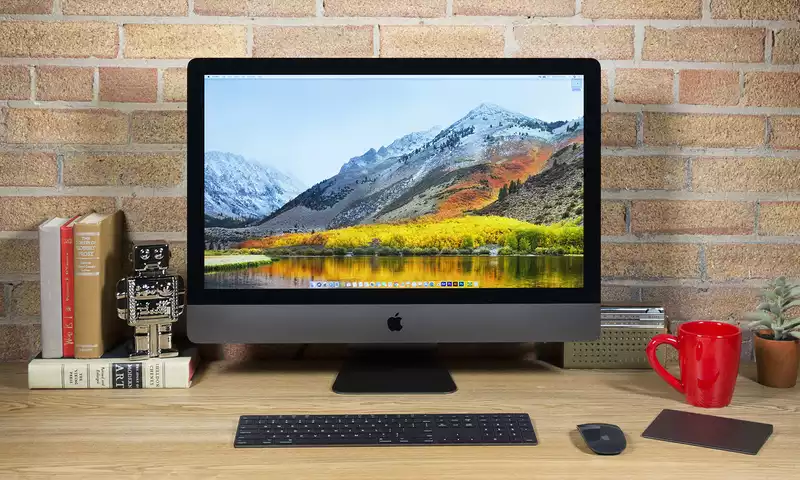Apple may be redesigning the iMac for the first time in 16 years. It is likely to be radically different from its previous form factor, a single sheet of curved glass placed on a desk like Star Trek's Enterprise Control.
According to this new patent published by the U.S. Patent and Trademark Office, discovered by Apple Insider, at least Apple designers Keith Hendren, Paul Wang, Adam Garelli, Brett Degner, Christiaan Ligtenberg, and Dinesh Mathew are working on this.
Check it out:
The patent, titled "Electronic Device with Glass Housing Member," describes a single sheet of ultra-thin glass that curves from desk to sky. The bottom of the curve is flat and can hold a keyboard and trackpad on either side of the work area.
The top of the curve will hold no electronics other than a flat display. On the back, a polygonal wedge will hold the guts of the Mac. The wedge itself secures the computer to the port (left in the figure below).
The design may possibly have an embedded capacitive keyboard with tactile feedback; according to AppleInsider, Hendren, a product designer with the Macintosh Architecture Group, previously worked on the MacBook's in-key capacitive touch sensor. But you can also use your own keyboard on top of the curved iMac's flat, horizontal surface.
It's a beautiful design worthy of Picard's Enterprise issue.
It was designed as a dock station for MacBooks, which, as this illustration shows, can somehow be slipped through the hole.
If these projects really make it to the Apple Store, it would be quite a revolution.
Apple adopted the current form of the iMac in 2004, a panel with a screen and gut and an aluminum base to support it. That form factor has been refined over the years with thinner and thinner screens and chins. But more than that, it has remained more or less the same for a very long time, only the materials have changed from plastic and glass to aluminum and glass.
Prior to that, the only major change in the Macintosh was in 1998, when Apple redesigned the iconic original Macintosh into the iMac; in 2002, a hemispherical base with a floating flat panel and a balanced stainless steel arm This also brought a radical change, with only the display supported by a balanced stainless steel arm. Then, in 2004, came the form factor we see today.
The MacBook docking station would be even more radical. We last saw it in the amazing and endearing PowerBook Duo, a line of subnotebooks produced from 1992 to 1997. the Duo had a mechanized docking station that, when the computer was inserted into the slot, provided a stand-alone display, an expansion slot, and additional hard drive storage, instantly transforming it into a desktop computer.
The idea of Apple making something like that again has an irresistible appeal to old-timers like myself.
It may not be far-fetched to think that we will see something like these two designs, or another radical change, in the near future. Now that Jony Ive has left, it would not be surprising if Apple's designers establish a new visual code for the next decade. And maybe it will all start with the Macintosh, as it did in 1984, 1998, and 2004.
For the latest developments and announcements of current and upcoming Apple iMac models, see the iMac 2020 news page.










Comments